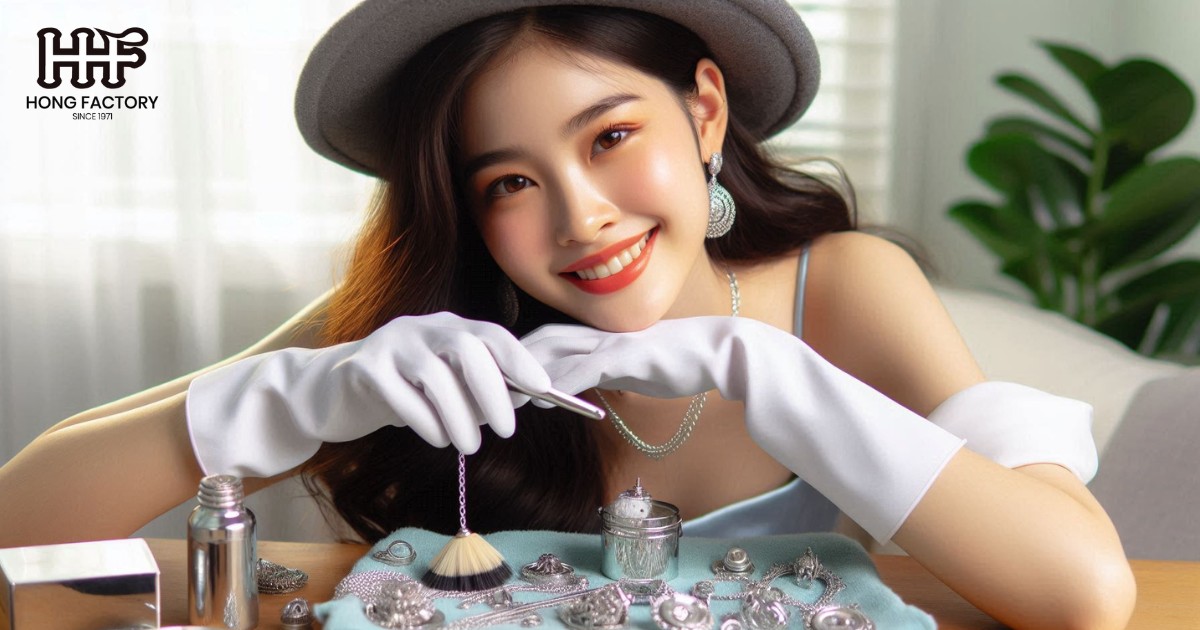Jewelry is more than just an accessory; it’s a reflection of personal style, a keepsake of memories, and often, a significant financial investment. To keep your favorite pieces looking stunning for years to come, it’s essential to maintain a regular care routine. This article will guide you through the perfect daily jewelry care routine, while also outlining weekly maintenance tips, cleaning schedules, and inspections to ensure that your jewelry retains its brilliance and longevity.
Why Jewelry Care is Important
Before diving into the specifics of a daily routine, it’s worth understanding why jewelry care is essential. Jewelry—whether it’s gold, silver, diamonds, or gemstones—can lose its shine, become damaged, or even break if not properly maintained. Daily exposure to dirt, oils, and environmental factors can lead to tarnishing, dullness, or the loosening of stones. Without proper care, your precious pieces may not last as long as they should. Thus, establishing a daily maintenance and cleaning schedule is key to preserving your jewelry’s allure.
Daily Jewelry Care Routine
A little attention every day can go a long way in maintaining the beauty and integrity of your jewelry. Here’s a simple yet effective daily care routine that will help your pieces retain their shine
1. Remove Jewelry Before Certain Activities
Many people forget that jewelry, though durable, is not impervious to damage. One of the easiest ways to maintain your jewelry’s condition is to remove it before engaging in activities that could expose it to harmful elements. This includes
- Exercising or heavy physical activity : Sweat can corrode metals, while friction can scratch gemstones.
- Showering or swimming : Water, especially chlorinated or saltwater, can tarnish metal and weaken clasps or prongs.
- Using chemicals : Cleaning products, perfumes, lotions, and hairspray can all dull the shine of metals and gemstones.
Daily jewelry care begins with simply removing your jewelry when it’s vulnerable to damage. Make this a habit, and you’ll be protecting your pieces from unnecessary wear and tear.
2. Wipe Jewelry After Wearing
After a day of wear, jewelry collects oils, sweat, and dirt from your skin. Even if you’ve been careful with your jewelry, a simple wipe-down will help prevent buildup. Use a soft microfiber cloth to gently rub the surfaces of your jewelry, removing any residues.
This step in your daily maintenance routine prevents grime from accumulating and keeps your jewelry looking clean and polished. Over time, this small daily action will reduce the need for intensive cleanings.
Weekly Jewelry Care Routine
While a daily routine is essential for surface-level care, weekly maintenance ensures that your jewelry is in top condition structurally and aesthetically. Here’s how to build a simple weekly care routine
1. Check for Signs of Wear or Damage
Once a week, take a moment to inspect your jewelry closely. Look for signs of wear, including
- Loose stones : If a gemstone appears to be wobbling in its setting, it’s time to have it professionally checked.
- Scratches or dents : Metals like gold and silver can scratch easily, so be mindful of any visible damage.
- Bent prongs or clasps : These can cause gemstones to fall out or necklaces and bracelets to break.
This inspection is crucial for catching minor issues before they turn into major problems. If you notice any significant damage, take the piece to a professional jeweler for repairs.
2. Clean Your Jewelry Properly

In addition to the daily wipe-down, your jewelry needs a more thorough cleaning once a week to remove accumulated dirt and restore its shine. Different types of jewelry require different cleaning methods
- Gold and Silver : Soak in warm water mixed with a few drops of mild dish soap. Use a soft toothbrush to gently scrub crevices, then rinse and pat dry.
- Diamonds and Gemstones : Use a specialized jewelry cleaner or a homemade solution of water and mild soap. Avoid using harsh chemicals, which can damage stones.
- Pearls and Delicate Stones : Use a damp cloth to wipe them clean. Never submerge pearls or porous stones in water, as this can weaken their structure.
Adhering to this cleaning schedule will ensure that all dirt and debris are removed from your jewelry, allowing it to shine like new.
Monthly and Bi-Annual Jewelry Care Tips
While daily and weekly routines form the foundation of proper jewelry care, there are a few additional steps you should take on a monthly or bi-annual basis to ensure your pieces are in optimal condition.
1. Professional Cleaning and Inspection
At least once or twice a year, take your jewelry to a professional jeweler for a deep clean and inspection. Jewelers have specialized tools and cleaning solutions that can restore the brilliance of your pieces in ways that home cleaning cannot. A professional can also identify and fix any minor issues, such as loose stones or worn prongs, before they become serious problems.
This inspection process is especially important for engagement rings and other high-value pieces, as these are often worn daily and are more prone to damage.
2. Reassess Your Jewelry Storage
Improper storage can cause your jewelry to scratch or tangle, leading to unnecessary damage. Every month, take a moment to review how you store your jewelry. Make sure that
- Each piece is stored in a separate pouch or compartment to prevent scratching.
- Necklaces are hung or laid flat to avoid tangling.
- Jewelry boxes are lined with soft fabric to cushion delicate items.
Proper storage is an often-overlooked aspect of daily maintenance, but it plays a critical role in preserving the condition of your pieces.
Special Care for Different Types of Jewelry
Not all jewelry is created equal. While gold and diamonds may be more resilient, pearls, opals, and other delicate materials require extra care. Here’s a brief overview of how to care for different types of jewelry
1. Gold and Platinum
These metals are relatively durable but can still scratch and tarnish over time. Follow the daily and weekly care routine outlined above, and avoid exposing them to harsh chemicals.
2. Silver
Silver tarnishes more easily than gold, so it may require more frequent cleaning. Use a silver polishing cloth to remove tarnish, and store silver jewelry in an airtight bag to slow down the tarnishing process.
3. Gemstones
Different gemstones have different hardness levels, so while diamonds are quite tough, stones like opals and emeralds are more fragile. Clean gemstones with a gentle solution of soap and water, and avoid exposing them to extreme temperatures.
4. Pearls
Pearls are particularly sensitive to chemicals, so always put them on after applying perfume and makeup. Store them in a soft, padded pouch to prevent scratching, and wipe them down with a damp cloth after each wear.
Conclusion
Caring for your jewelry doesn’t have to be a daunting task. By following a simple daily maintenance routine, you can keep your favorite pieces in excellent condition for years to come. Remember to remove your jewelry during risky activities, wipe it down after each wear, and give it a deeper clean once a week. Regular inspections will help you catch any issues early, preventing costly repairs or the loss of a valuable piece.
By adopting these daily, weekly, and bi-annual care routines, your jewelry will continue to shine brightly, adding beauty and elegance to your life for many years to come.





